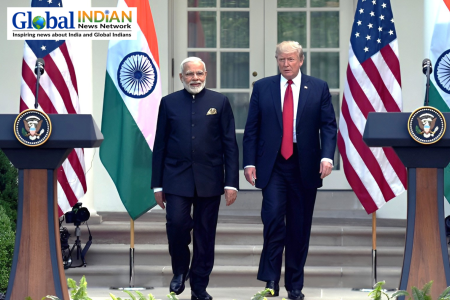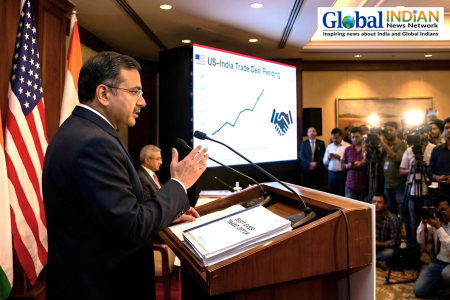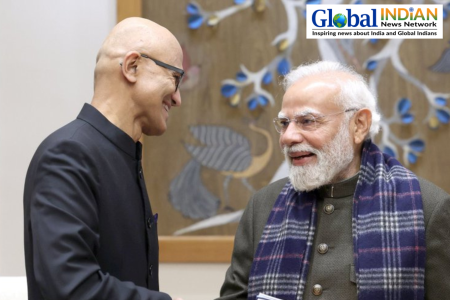Dear Readers,
As the political cauldron simmers in anticipation of India’s 2024 general elections, one narrative appears to dominate headlines and discourse alike: the almost certain victory of Prime Minister Narendra Modi and his Bharatiya Janata Party (BJP). The prevailing question is not whether the BJP will secure a win but rather the extent of its dominance. Speculation abounds regarding the number of seats the BJP will seize directly and those it will garner through its alliance with the National Democratic Alliance (NDA).
Bharatiya Janata Party (BJP). The prevailing question is not whether the BJP will secure a win but rather the extent of its dominance. Speculation abounds regarding the number of seats the BJP will seize directly and those it will garner through its alliance with the National Democratic Alliance (NDA).
The BJP’s steadfast governance, bolstered by Modi’s charismatic leadership and a series of populist policies, seems to have resonated well with a broad swath of the Indian electorate. The party’s strategy to expand its influence across various Indian states by meticulously weaving regional aspirations into its national narrative has only solidified its position as the frontrunner.
On the flip side, the Congress party, helmed by Rahul Gandhi, appears to be grappling with internal challenges and a dwindling appeal among voters. Projections suggest that Congress might struggle to exceed—or even match—its performance in the 2019 elections, potentially ceding further ground to a robust BJP.
Now let me turn to one of the most discussed topics: the Western media’s bias against PM Modi and India.
In today’s increasingly interconnected world, the role of the media is not only to inform but also to shape perceptions. This responsibility comes with a need for balance, especially in international reporting. A notable example is the Western media’s coverage of India, particularly with respect to its Prime Minister, Narendra Modi. It is very apparent that there exists a perceptible bias, one that skews the narrative away from objective journalism towards a more critical, often adversarial tone.
PM Modi, a figure who has dominated Indian politics for the better part of the last decade, is frequently spotlighted in a manner that some believe emphasizes controversy over achievement. His policies, from economic reforms to foreign diplomacy, are often portrayed through a lens that scrutinizes not just the policy itself but the ideology behind it. This is not to say that criticism is unwarranted; however, the balance of coverage is key. For instance, his administration’s significant advancements in digital infrastructure and direct benefit transfers receive less attention than more contentious issues such as the Citizenship Amendment Act or the abrogation of Article 370.
It’s essential for the media to reflect on its role not just as a watchdog but as a bridge that fosters understanding. Bias—whether perceived or real—can alienate and misinform audiences. The challenge for Western media, then, is to engage in a more holistic examination of India’s socio-political landscape. By presenting a broader spectrum of perspectives, the media can provide a more comprehensive view of India’s strides and struggles, thus fostering a better-informed global audience.
The recent revelation by Swapan Dasgupta regarding his commissioned, yet unpublished, essay by The New York Times (NYT) underscores a growing dilemma in global journalism: the balancing act between diverse narratives and editorial discretion. The case in point revolves around an essay detailing the appeal of Indian Prime Minister Narendra Modi’s BJP movement—a topic of significant political and cultural weight, especially in a time of profound national and global transformation.
Dasgupta, a prominent author and columnist known for his articulate conservative views, was approached to lend his insights into a movement that has reshaped Indian politics. His perspective was evidently sought after to provide NYT readers with a nuanced understanding of a major world leader’s political influence. However, the decision to not publish the essay after editorial requests for modifications were seemingly met raises critical questions about the thresholds of acceptability and the invisible lines drawn by major publications.
This incident brings to the forefront the challenges faced by publications like the NYT in presenting complex narratives. On one hand, there is a need to provide a platform for diverse viewpoints, enriching readers’ understanding of global phenomena. On the other hand, editorial standards and biases—whether implicit or explicit—shape which narratives are amplified and which are silenced.
The role of a publication in shaping discourse is immense, and with it comes a responsibility to foster informed debate that includes a multitude of voices. The refusal to publish a prepared and revised essay not only stifles a particular viewpoint but also hints at a larger discomfort with confronting narratives that diverge from a presumed norm. It’s imperative for leading publications to reflect on their editorial decisions—decisions that must be guided not only by journalistic standards but also by a commitment to inclusivity in intellectual discourse.
As we navigate an era where information is both a weapon and a tool, the integrity of journalistic practices must be relentlessly scrutinized and aligned with the broader goal of truthfulness, ensuring that all voices, regardless of geographical or ideological origins, are heard and respected.
Raj Shah
Editor-in-Chief












